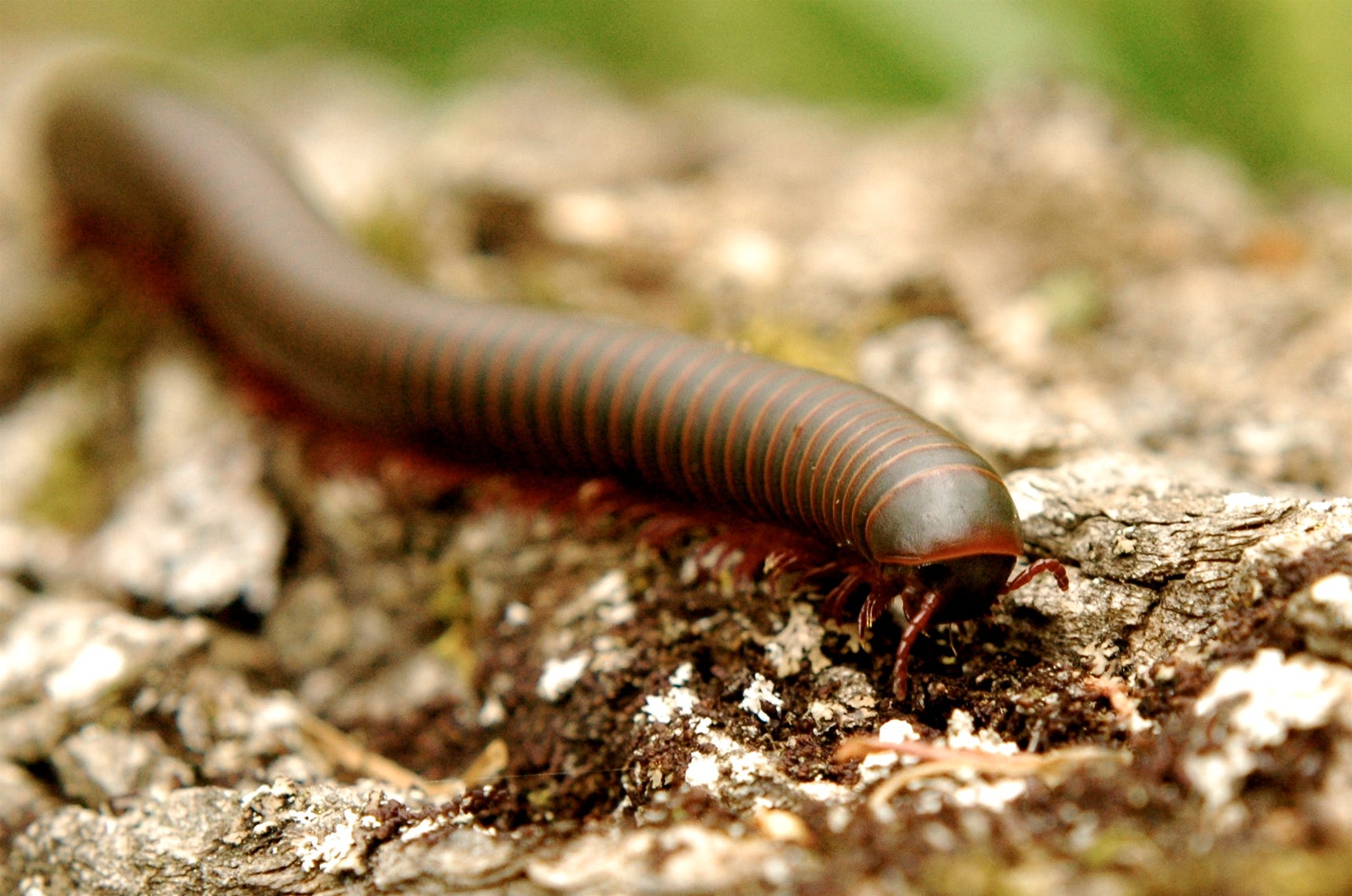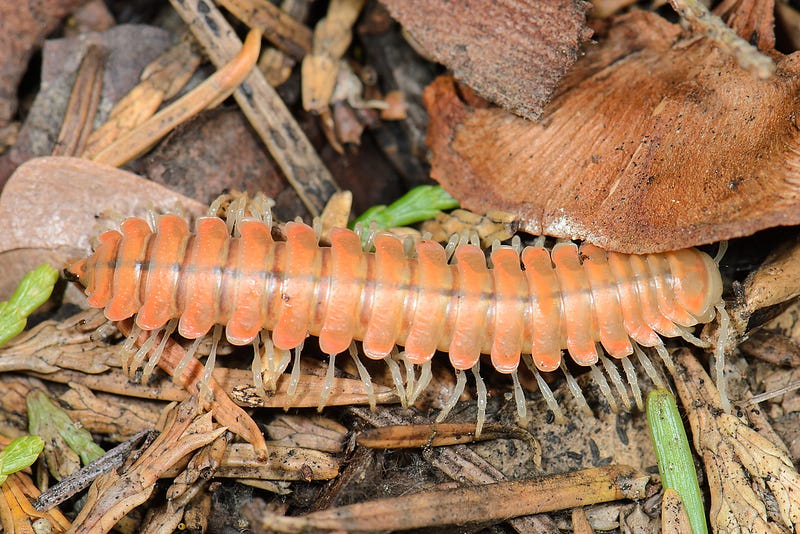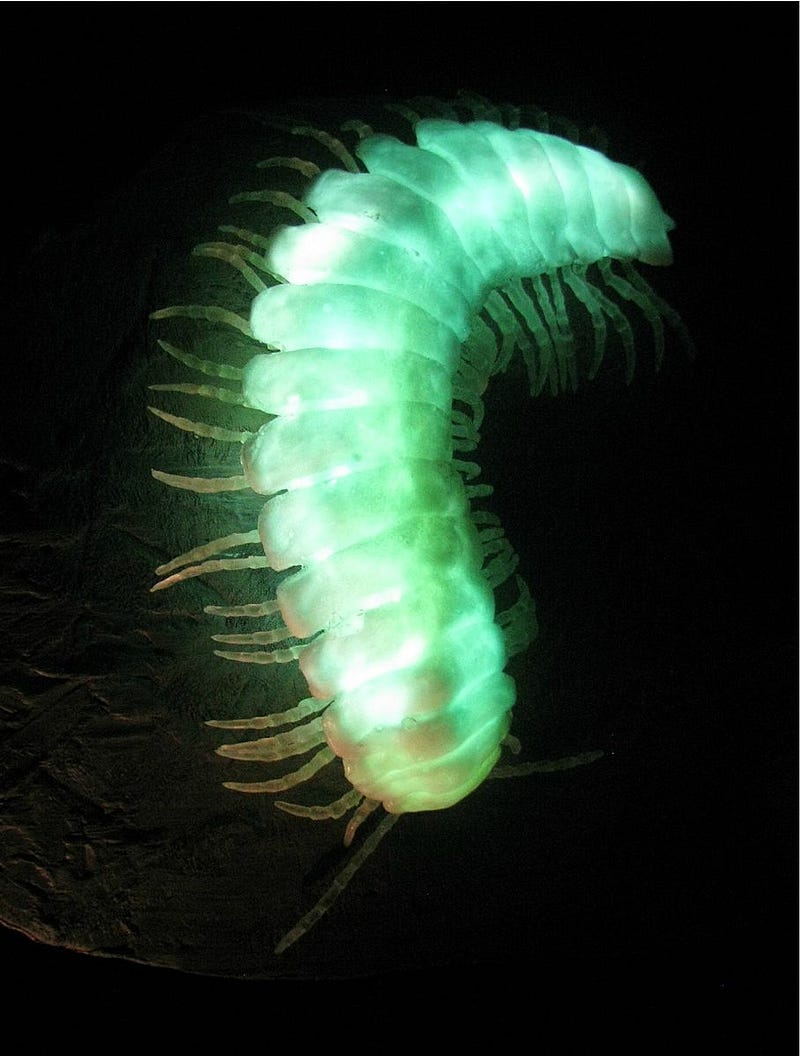
This week, we’ll again be looking at a group of organisms that you would have to travel far to observe. However, unlike the anglerfish, these are remote because of their limited distribution. They can only be found in parts of three mountain ranges in southwestern California. As you can likely guess from the above picture, we will be discussing a group of millipedes.
Firstly, to clear up some possible confusion, millipedes are not insects. Both groups are arthropods (invertebrates with an exoskeleton, segmented body, and paired, jointed limbs). However, insects are only those with a three-part body, three pairs of limbs, compound eyes, and a single pair of antennae. This means that various other ‘creepy crawlies’ like millipedes, centipedes, and arachnids do not qualify. The name millipede comes from Latin for ‘thousand feet’, although the most found on any one species is only 750. In contrast to their fast and predatory distant cousins, the centipedes, millipedes are generally slow and consume decaying matter.
At least 12,000 species of millipede are known, though there may be many more yet to be encountered and described by science (a common situation for smaller arthropods). Their lack of speed and dependence on humid habitats means that many groups are not widespread and some are quite remote, like the ones we’ll be talking about today. It is a group of nine species that make up the genus Motyxia. These species have non-overlapping ranges (with a few exceptions) in the southern Sierra Nevada, as well as Tehachapi and Santa Monica mountains. They can be found in both forests and meadows and are some of the few millipedes that exhibit bioluminescence.

These species are all nocturnal and in the dark their exoskeleton completely lights up (the internal organs do not luminesce, indicating that the chemical reaction occurs in the exoskeleton itself). Below is a picture of a model demonstrating what this looks like. The model is at an 18x scale from life size and found at the American Museum of Natural History. Night doesn’t matter to Motyxia, since they have no eyes, but potential predators would certainly pick up on the bioluminescent glow, so what is its purpose?
There was some speculation that these millipedes glow for the same reason that poison dart frogs are so brightly colored. Those frogs produce potent toxins in their skin and their bright coloration is used as a warning to predators to avoid them. However, in science, speculation is never sufficient. Studies were conducted with a similar methodology to other species with warning coloration such as coral snakes. Models were set out, some with luminescent paint and others without. Some live Motyxia also had their light covered up with paint. Attacks by predators were increased on the models and live individuals that did not glow.

What is it about these millipedes that would discourage predators? They produce hydrogen cyanide, a highly toxic and potentially lethal substance. They are not the only millipedes to do so, either. A number of millipede species related to Motyxia are also poisonous in this way. These possess the more stereotypical warning mechanism of bright color patterns. However, those bright patterns aren’t particularly helpful at night, when most predators that are using sight will perceive the world in a much more monochromatic fashion (the eye cells responsible for color vision are not highly effective at low light levels). Instead, Motyxia species have developed a way of advertising their nature using light rather than color, a fascinating workaround.
As you can see from the last two weeks already, bioluminescence has a wide variety of functions. Predation mimicry and aposematism (that’s the technical term for dissuasion of predators through markings or other visual patterns) are almost opposite of each other. We will continue to explore these and other uses of bioluminescence throughout Season 8. Please like and share if you find this topic fascinating. As always, I am also appreciative of any constructive criticisms or suggestions that you might have to improve my writing or storytelling.